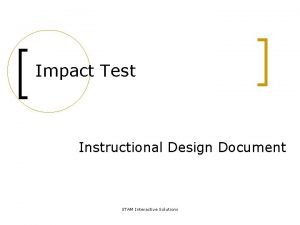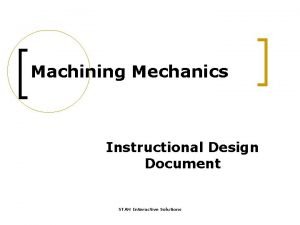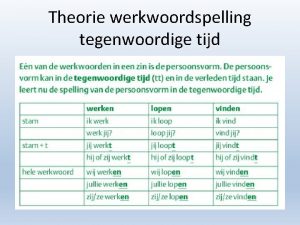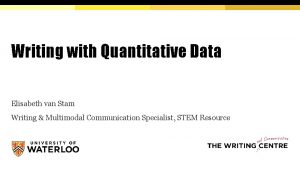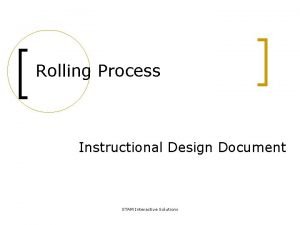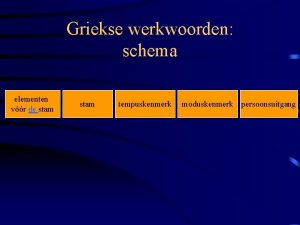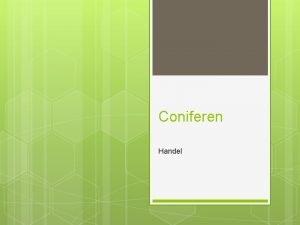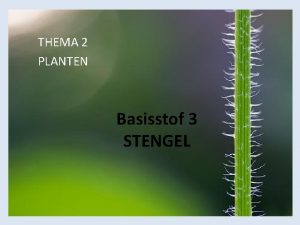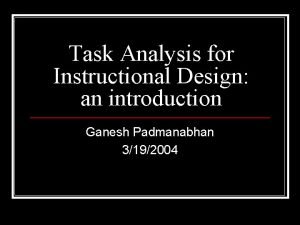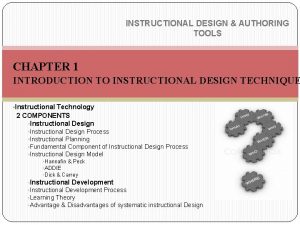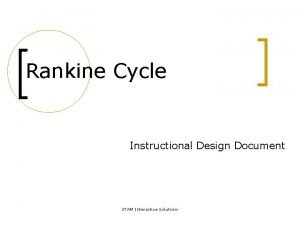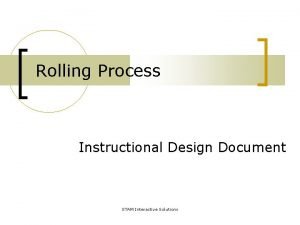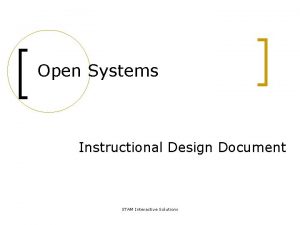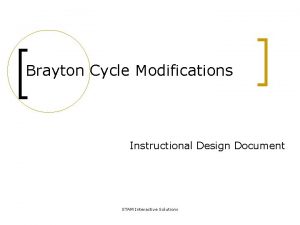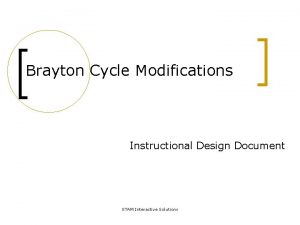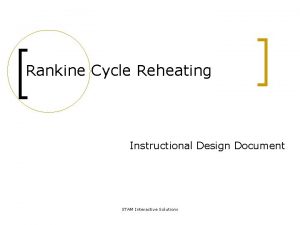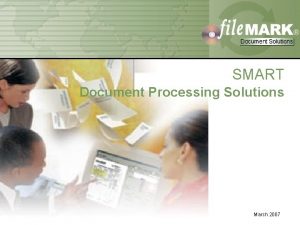Impact Test Instructional Design Document STAM Interactive Solutions















- Slides: 15

Impact Test Instructional Design Document STAM Interactive Solutions

Demo Outline (For reference)

Impact Test Solid Mechanics An impact test is a dynamic test conducted on a selected specimen which is usually notched. The specimen is struck and broken by a single blow in a specially designed machine. This demo illustrates the experiment setup, procedure and the energy absorbed in an impact test.

Impact Test Solid Mechanics Impact Test Aim: To measure the toughness, or energy absorption capacity of the materials. Notch Test-specimen Pendulum Machine

Impact Test Solid Mechanics Test Specimen – Support Conditions Charpy Test Setup Notch Point of Impact Specimen 44 m Simple beam support Specimen

Impact Test Solid Mechanics Test Specimen – Support Conditions Izod Test Setup Notch Cantilever beam support

Impact Test Solid Mechanics Equations

Impact Test Solid Mechanics Charpy Experiment Simulation 1. Load the Specimen. 2. Release the Pendulum. Hammer Specimen Simple beam support Drag the specimen to the support and click hammer.

Impact Test Solid Mechanics Charpy Experiment Simulation 1. Load the Specimen. 2. Release the Pendulum. Indicate P. E = 300 J Energy Absorbed = 120 J 150 Click the Quiz button. 0

Impact Test Solid Mechanics Resources Reference Links: • http: //en. wikipedia. org/wiki/Charpy_impact_test • http: //en. wikipedia. org/wiki/Izod_impact_strength_test • http: //www. matweb. com/reference/izod-impact. aspx • http: //www. steeluniversity. org/content/html/eng/default. asp? catid=151&pageid=2081271949

Impact Test Solid Mechanics Results of the Charpy Impact test and the Izod impact test cannot be compared can be compared if the specimens have the same dimensions should be used in tandem to estimate the toughness of the material can be compared if the pendulum / hammer has the same weight

Impact Test Solid Mechanics Results of an impact test can be used directly in design equations for components can be used in design equations for components only after empirical correlation has been obtained can be used in design equations after adjusting for temperature difference only cannot be used for design calculations

Impact Test Solid Mechanics Impact tests are independent of specimen size are independent of notch size are dependent on specimen size are dependent on notch size

Impact Test Solid Mechanics The temperature of the specimen does not affect the results of the test is directly proportional to the measured toughness is inversely proportional to the measured toughness affects the measured toughness differently for different materials

Impact Test Solid Mechanics Results of the impact test can be used directly to estimate yield strength cannot be used directly to estimate yield strength can be used to estimate yield strength based on empirical correlations can be used to estimate yield strength based on fundamental relationships
 Stam interactive
Stam interactive Stam interactive
Stam interactive Schema tegenwoordige tijd en verleden tijd
Schema tegenwoordige tijd en verleden tijd Stam exam tables
Stam exam tables Stam
Stam Stam + t schema
Stam + t schema Larix op stam snoeien
Larix op stam snoeien Stengel onderdelen
Stengel onderdelen Css abu dhabi
Css abu dhabi Vervde
Vervde Si-a murit iubirea noastra
Si-a murit iubirea noastra Nu cata in departare fericirea ta iubite
Nu cata in departare fericirea ta iubite Document
Document Task analysis instructional design
Task analysis instructional design Comparing instructional design models
Comparing instructional design models Instructional design authoring tools
Instructional design authoring tools
